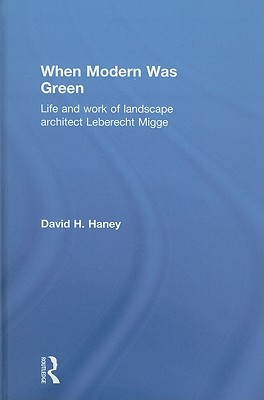
- We will send in 10–14 business days.
- Author: David Haney
- Publisher: Routledge
- ISBN-10: 0415561388
- ISBN-13: 9780415561389
- Format: 15.8 x 23.4 x 2.5 cm, hardcover
- Language: English
- SAVE -10% with code: EXTRA
Reviews
Description
Winner of the Elisabeth Blair MacDougall Book Award 2013 presented by the Society of Architectural Historians
Today, contemporary landscape design is increasingly drawing from ideas of sustainability and ecological stability. Not in fact new, the foundations of this approach stem from early twentieth century Germany, where architects and planners were already beginning to use the design concepts which are now referred to as "green".
This ecological school of thought was driven by modernist landscape architect Leberecht Migge (1881-1935). Working with significant modernist architects of the age - including Martin Elsaesser, Ernst May, Bruno Taut, and Martin Wagner - Migge was responsible for some of the most important housing and planning projects of the age; the mass housing settlements, or GroÃsiedlungen, of Frankfurt Main and Berlin.
Using "biotechnic" principles to integrally link dwelling and garden, Migge was able to recycle household waste to grow foodstuffs through the use of innovative infrastructure and open space planning. Also a skilled park and garden designer, he drew together green and architectural elements in his "garden-architectonic" approach.
David H. Haney's book is the first to fully document Leberecht Migge's life and work. Using Migge as a starting point, Haney addresses conceptual and theoretical aspects of German ecological design, challenging conventional assumptions about modernism and ecological design history. With 200 illustrations and photographs, When Modern Was Green is ideal for students and academics interested in modernism, landscape history and higher level German studies.
EXTRA 10 % discount with code: EXTRA
The promotion ends in 17d.05:54:08
The discount code is valid when purchasing from 10 €. Discounts do not stack.
- Author: David Haney
- Publisher: Routledge
- ISBN-10: 0415561388
- ISBN-13: 9780415561389
- Format: 15.8 x 23.4 x 2.5 cm, hardcover
- Language: English English
Winner of the Elisabeth Blair MacDougall Book Award 2013 presented by the Society of Architectural Historians
Today, contemporary landscape design is increasingly drawing from ideas of sustainability and ecological stability. Not in fact new, the foundations of this approach stem from early twentieth century Germany, where architects and planners were already beginning to use the design concepts which are now referred to as "green".
This ecological school of thought was driven by modernist landscape architect Leberecht Migge (1881-1935). Working with significant modernist architects of the age - including Martin Elsaesser, Ernst May, Bruno Taut, and Martin Wagner - Migge was responsible for some of the most important housing and planning projects of the age; the mass housing settlements, or GroÃsiedlungen, of Frankfurt Main and Berlin.
Using "biotechnic" principles to integrally link dwelling and garden, Migge was able to recycle household waste to grow foodstuffs through the use of innovative infrastructure and open space planning. Also a skilled park and garden designer, he drew together green and architectural elements in his "garden-architectonic" approach.
David H. Haney's book is the first to fully document Leberecht Migge's life and work. Using Migge as a starting point, Haney addresses conceptual and theoretical aspects of German ecological design, challenging conventional assumptions about modernism and ecological design history. With 200 illustrations and photographs, When Modern Was Green is ideal for students and academics interested in modernism, landscape history and higher level German studies.


Reviews